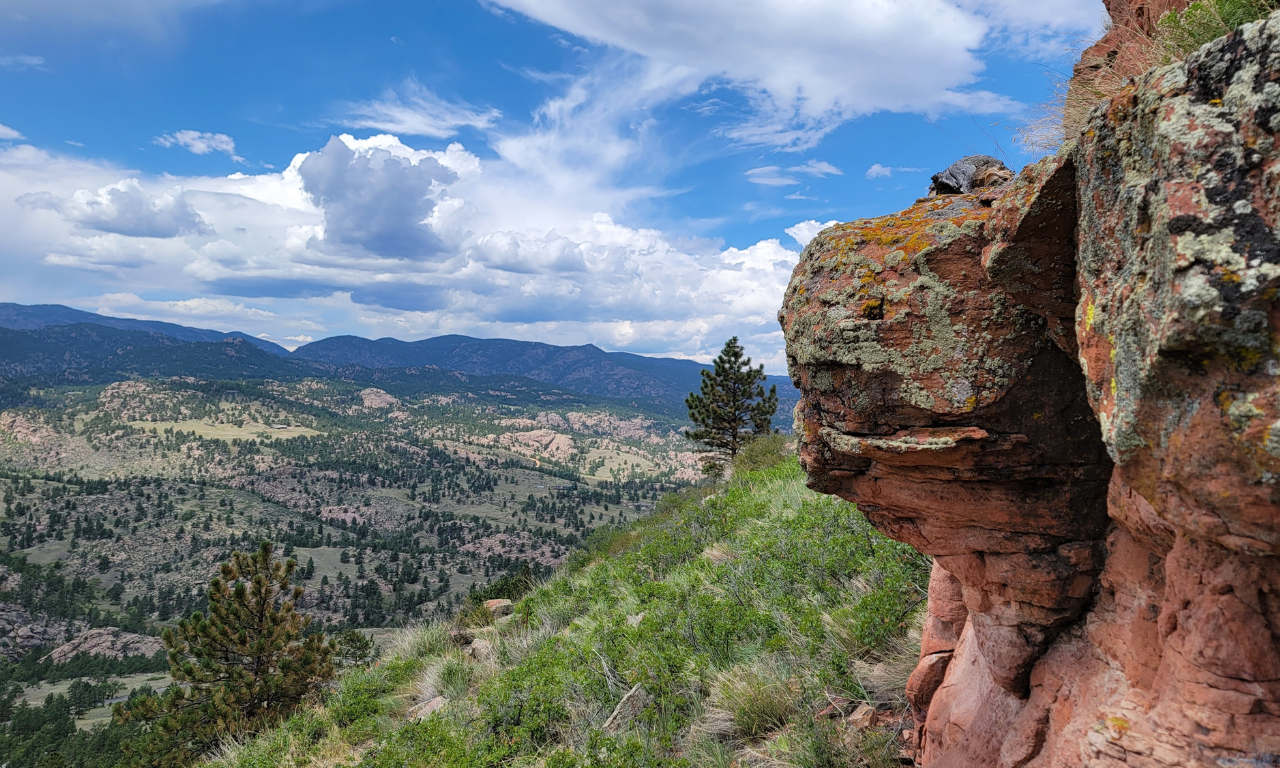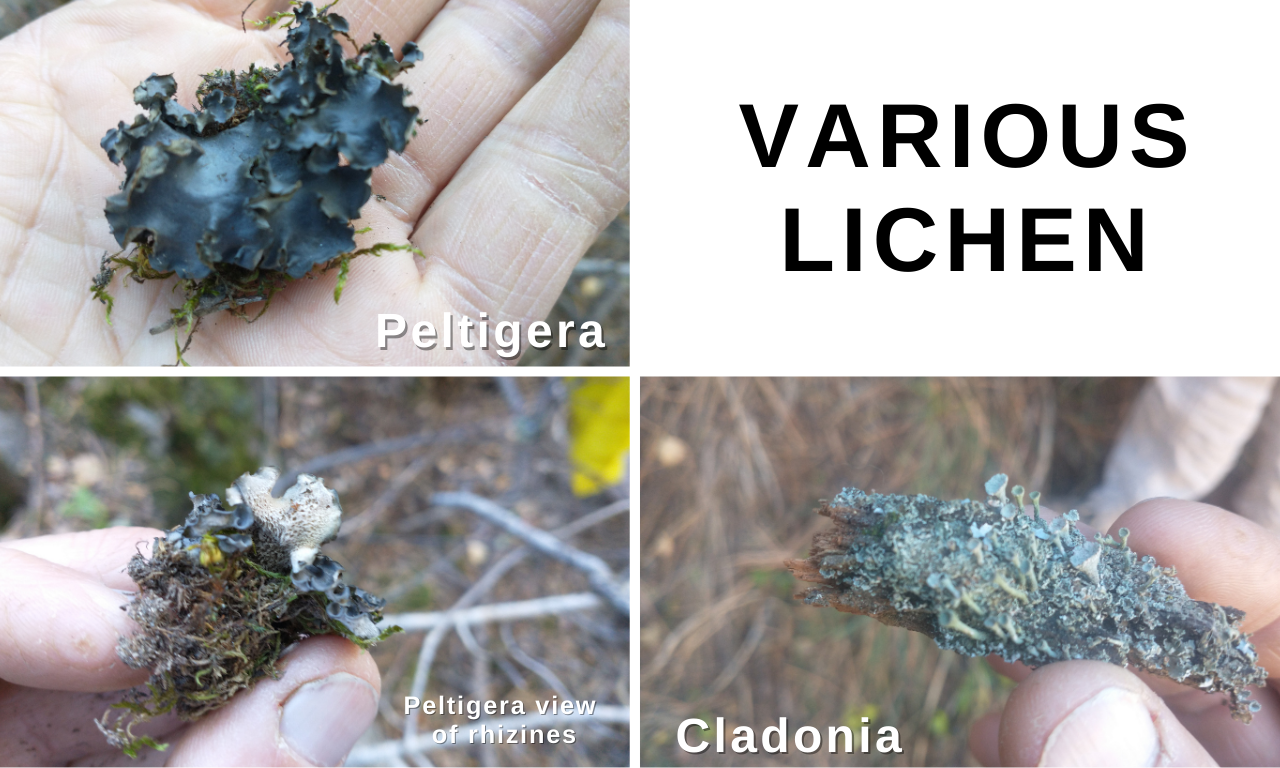When we go outside, we go to get some exercise, take in the fresh air, and enjoy the nature around us. We often focus on the plants and animals we might see as we are hiking, but what about . . . lichens? That’s right, there is more than meets the eye at the Anne U. White Trail!
What is a Lichen?
A lichen is unusual in that it is not one organism but several living together in something called a symbiosis. A lichen thallus, or body, consists of at least one fungal partner and a photobiont. The fungal partner(s) will provide support and prevent the lichen from drying out, while the photobiont is the photosynthetic partner that provides food for the lichen. Lichens are all around us.
In this article, I am going to describe the different ways we categorize lichens, tell you about some common species, and tell you where to look to find them on your next hike. Lichens first can be categorized by size as either microlichens or macrolichens. Microlichens are extremely small and are difficult to differentiate without specialized equipment, like a compound microscope or chemical tests. Macrolichens, on the other hand, are easily visible and can often be identified to genus in the field.
Lichens are also categorized by their growth form. The common forms seen in Colorado are crustose, foliose, and fruticose lichens. Crustose lichens are microlichens you will notice most often at lower elevations, in dry and exposed areas, and on rocks. These lichens come in a variety of colors and are closely appressed to the surface of the rock and may even look like they are part of the rock. They are extremely difficult to identify, and scientists will often take the lichen, and part of the rock to which its attached, back to the lab to confirm species identifications!
Foliose lichens are macrolichens that have a leafy appearance and often grow along the ground or on tree branches and rock surfaces. Common lichens you could find growing on the ground along the Anne U. White Trail are in the Peltigera genus. These lichens, commonly called dog lichens, have distinctive root-like structures called rhizines on their lower surface that (to the imaginative lichenologist) look like dog’s teeth!
If you look at tree branches, you may notice Melanohalea growing there. The Greek root of this word means dark, which makes sense for this group of dark-brown lichens. On tree bark, you may also see Parmelia lichens, often known as shield lichens.
Finally, if you are lucky, you could see Dermatocarpon growing on some rocks. Dermatocarpon is a genus of foliose lichens that almost look like an ear growing out of the rock. It has a light tan surface and is black on the lower surface.
Some charismatic fruticose lichens you could see on the Anne U. White Trail are Cladonia or Usnea lichens. Cladonia species, also known as pixie cups, will have a leafy-looking base with cuplike or finger-like light green projections. These are most often found on rotting wood along the ground and in damp, shady areas of the trail. Usnea, on the other hand, are light green lichens that are hair like in appearance, which is why they are often called, Old Man’s Beard. They can be found on tree branches and are extremely common in Northern Colorado when you get above 10,000 feet elevation.
Next time you hike Anne U. White Trail, take some time to slow down and bring a magnifying glass. You may be surprised at what lichens you find!



